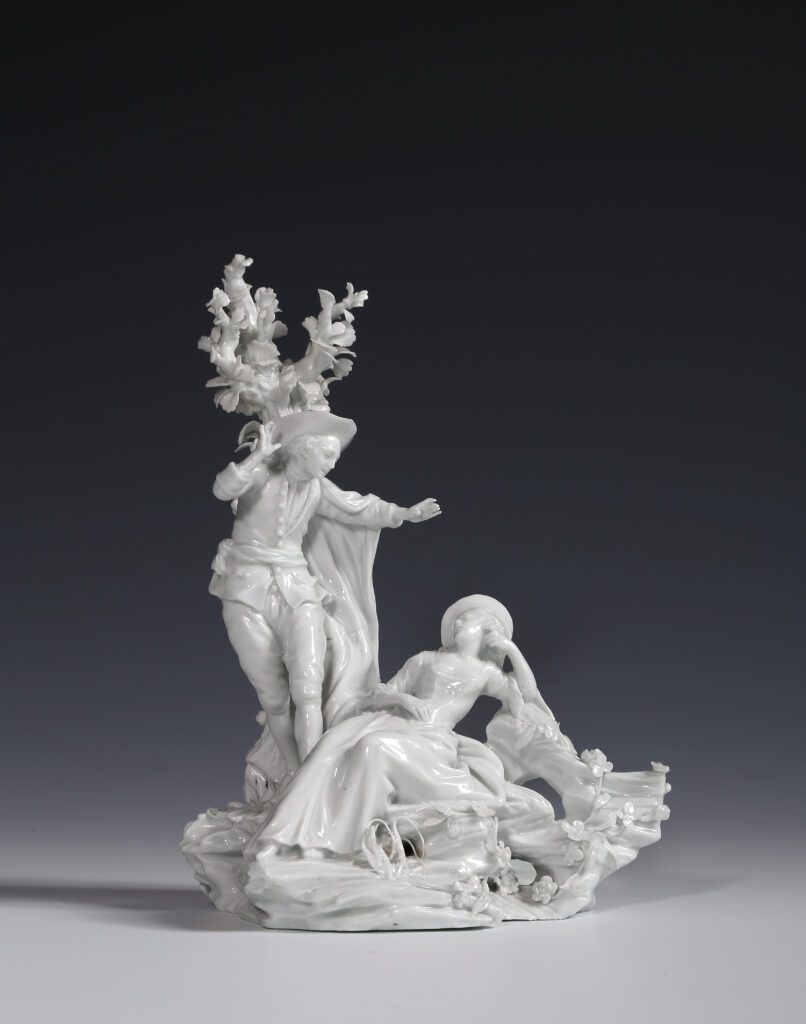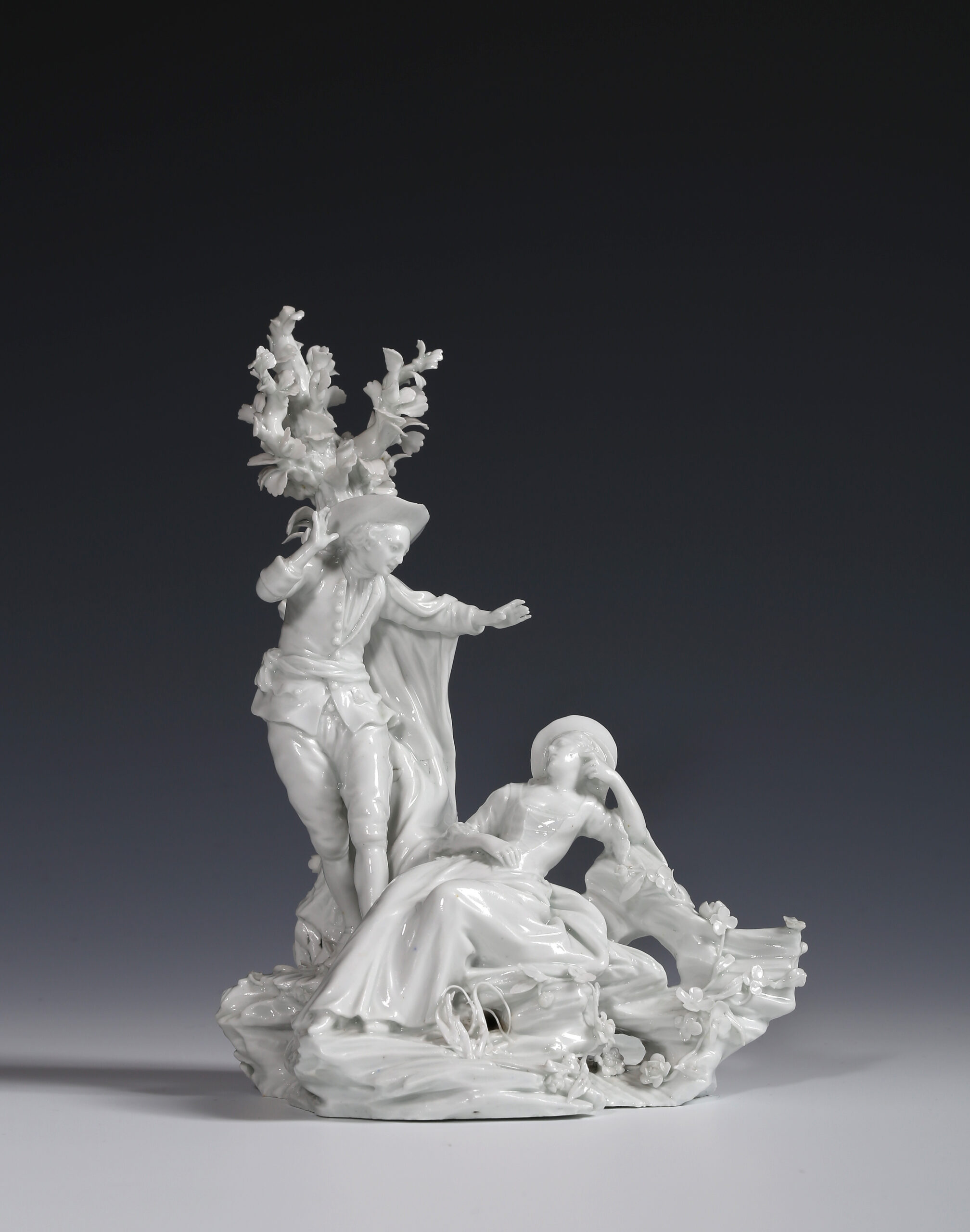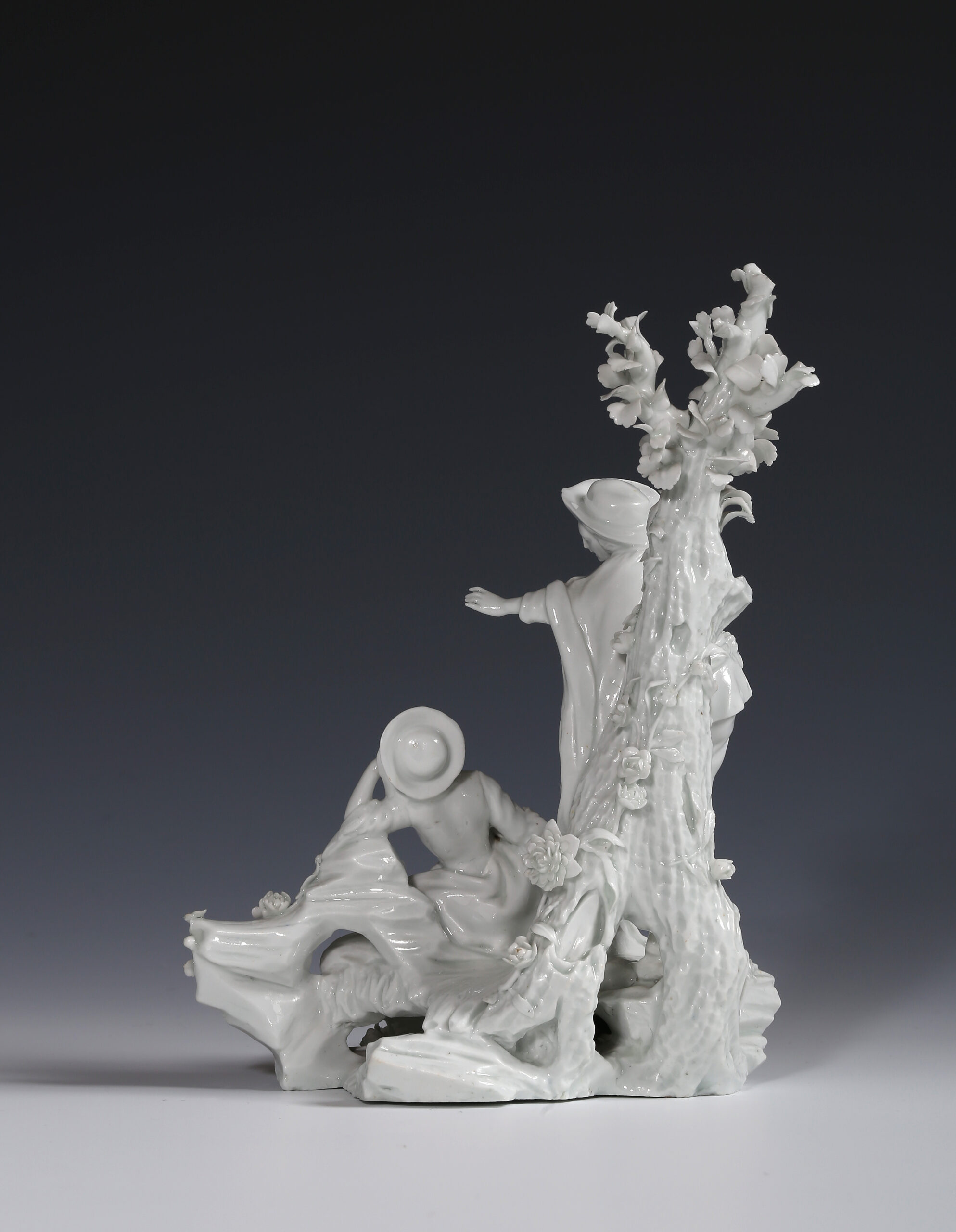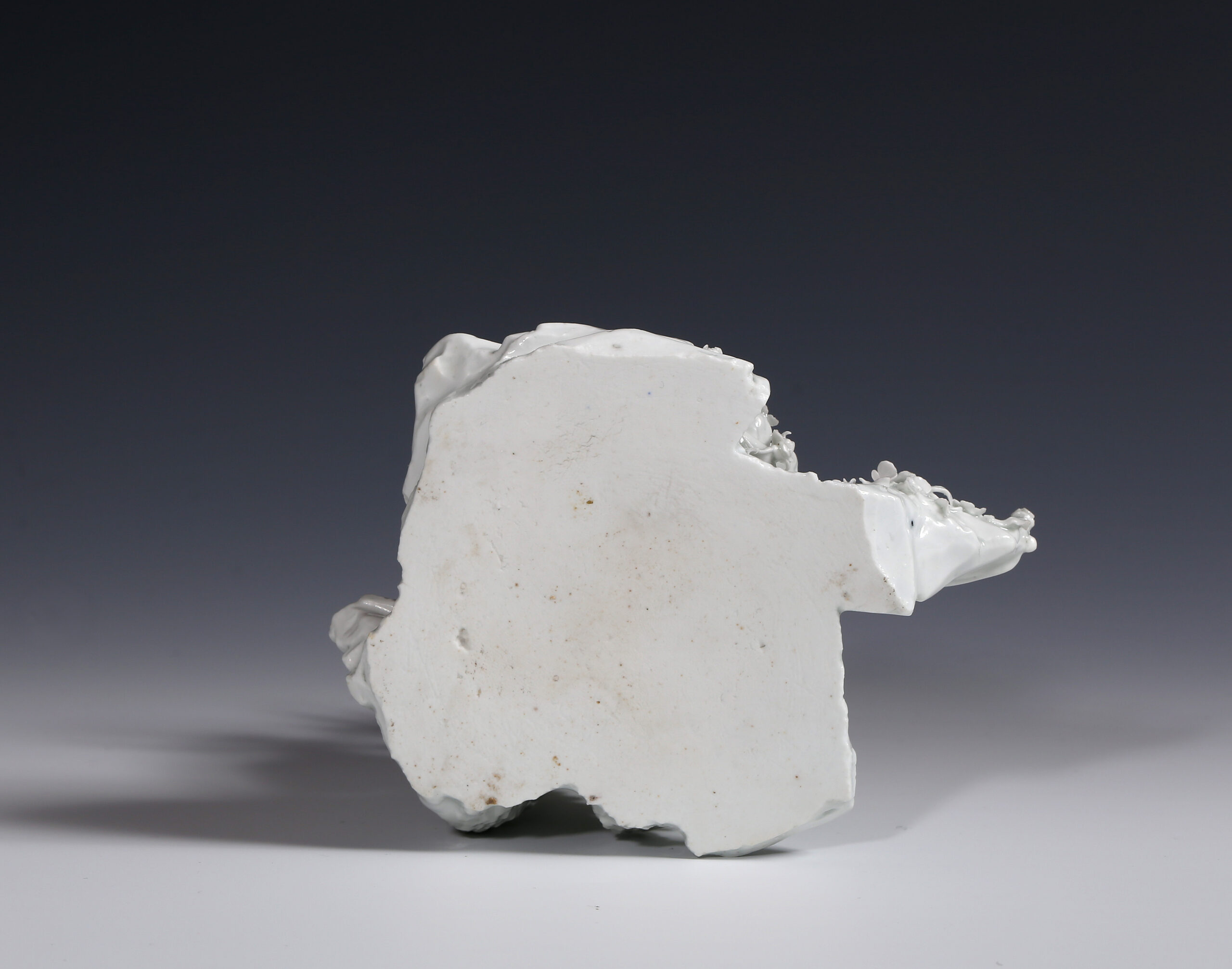The gallant stands under a tree with his arms raised on discovering a sleeping shepherdess reclining on rockwork. Variants of this subject were very popular and appear in numerous engravings after the paintings of artists such as Watteau, Boucher and Lancret.

François Boucher (1703–1770), ‘The Interrupted Sleep’
The Metropolitan Museum of Art (acc. No. 49.7.46)
The small-scale figure groups of Tournai are exceptional for the fine detail that could be achieved in soft-paste porcelain. Two other variations of this model can also be found with an elaborate trellis arbour and, surprisingly, also exist in Tournai faience.
On 3rd April, 1751, François-Joseph Peterinck (1719–1799) was granted a monopoly on porcelain production lasting thirty years by Prince Charles de Lorraine, then Governor General of the Austrian Netherlands, on behalf of Empress Maria-Theresa of Austria, his sister–in–law.[1]
Tournai began figure production as early as 1754 and attracted two notable sculptors to the factory. One was the Parisian Nicholas-Joseph-François Gauron (circa 1736– 1773) who had worked at the Mennecy factory before his arrival at Tournai at some point between 1754 and 1758. Gauron left the factory in 1764 and went on to work for ceramic factories in Brussels, Weesp, Liège, and from 1770 in England, at William Duesbury’s Chelsea and Derby works.[2] His most notable documented work at Tournai is an Apotheosis of Charles d’Oultremont, Prince-Bishop of Liège.[3]
The other sculptor employed at Tournai was Antoine or Antoine-Frans Gilis (1702–1781), Gilis was engaged by Peterinck in November 1756 along with his son, a painter, to establish an academy to improve the artistic skills of his workers (later the Académie des Beaux-Arts de Tournai), and he also worked at the factory until 1764.[4]
Our figure seems not to be in the style normally associated with Gauron and so is perhaps by the less well documented Gilis.
Condition:
Little finger of his right hand missing, losses to foliage
References:
An example in the Musée de Tournai is illustrated by E.J. Soil de Moriamé, Les Porcelaine de Tournay, 1910, p. 355, no. 743
Dumortier and Habets 2015
Claire Dumortier and Patrick Habets, Porcelaine de Tournai, Scènes galantes et décors historiés, (Brussels, 2015)
Hénault 1898
Maurice Hénault, Antoine Gilis sculpteur et peintre 1702-1781, (Paris, 1898)
Soil de Moriamé 1937
Chevalier Soil de Moriamé, La Manufacture Impériale et Royale de Porcelaine de Tournay, (Paris, 1937)
SOLD
[1] Charles was brother-in-law to the empress twice over, his elder brother Francis was married to Marie Theresa and Charles was married to her younger sister.
[2] Dumortier and Habets 2015, p. 32.
[3] Soil de Moriamé 1937, pp. 342 – 345, no. 709.
[4] Maurice Hénault, Antoine Gilis sculpteur et peintre 1702-1781, Paris, 1898.




